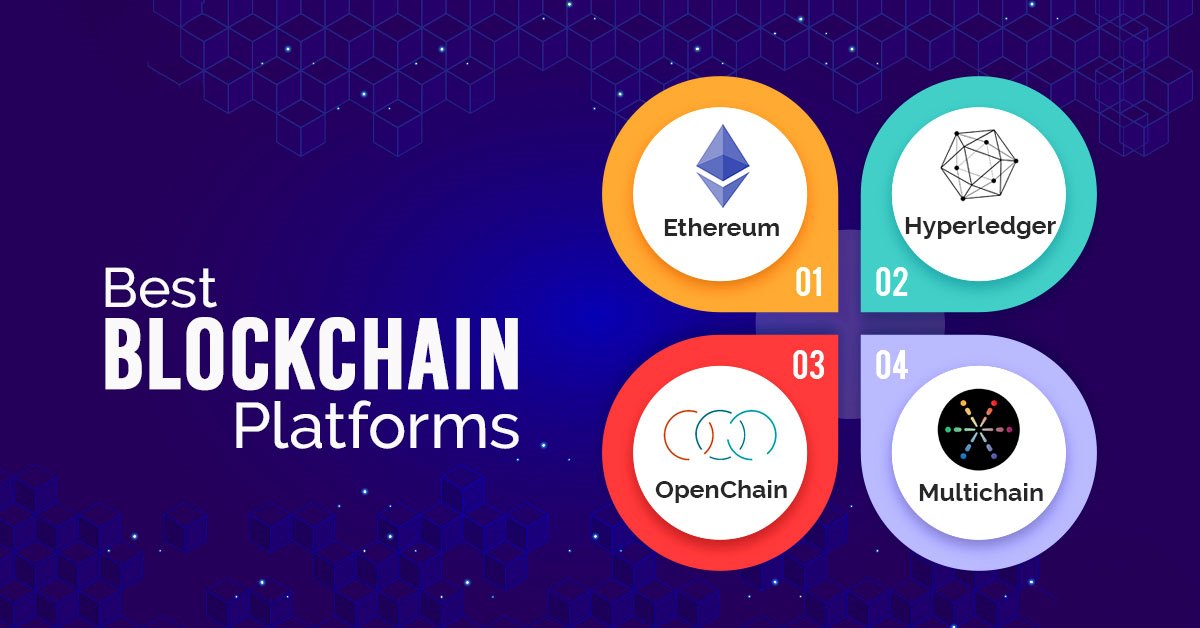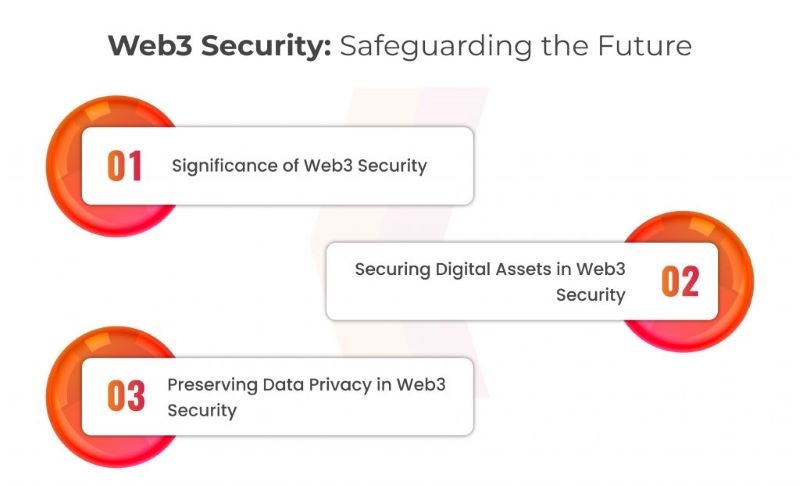Are you ready to step into the world of Web3 builders? Web3 applications are revolutionizing online interactions, offering new avenues for innovation and empowering users like never before. Web3 marks a shift from Web2's centralized control, emphasizing decentralization, blockchain technology, and token-based economies. This approach enhances user autonomy, bolsters data security, and promotes transparency through cryptographic principles and decentralized protocols.
Table of Contents
This guide is your gateway to becoming a Web3 builder, providing essential steps, tools, and insights to navigate this decentralized landscape effectively. Whether you're delving into decentralized finance (DeFi), developing NFT platforms, or creating decentralized social networks, mastering these fundamentals enables you to harness Web3's full potential.
Key Components of a Web3 Application
Smart Contracts: Smart contracts are self-executing contracts with the terms of the agreement directly written into code. They automate transactions and enforce rules on the blockchain, ensuring trustless interactions between parties.
Front-End Interfaces: The front-end of a dApp is the user interface (UI) through which users interact with the application. It communicates with the blockchain backend to retrieve and display data, manage transactions, and execute smart contract functions.
Blockchain Interactions: Interactions with the blockchain backend enable data storage, transaction processing, and execution of smart contracts. Developers use Web3 libraries and APIs to connect the dApp's front-end to the blockchain network, enabling seamless integration and functionality.

Choosing the Right Blockchain Platform
As a Web3 builder, selecting the right blockchain platform is a critical decision that profoundly influences the success of your application. Each platform brings distinct advantages and is tailored to different needs, necessitating careful evaluation based on your project's specific requirements.
Ethereum:
Ethereum stands as the pioneer of smart contracts, boasting a vast developer community and an extensive ecosystem of tools and resources. Its established track record makes it a reliable choice for developing diverse dApps. However, Ethereum faces scalability challenges and high gas fees, which can impact certain projects.
Polkadot:
Polkadot offers a multi-chain framework designed for interoperability, enabling different blockchains to communicate and share data seamlessly. This makes it an appealing option for projects that require cross-chain functionality. Polkadot's parachain model enhances scalability and customization, allowing developers to tailor blockchains to specific use cases.
Solana:
Known for its high throughput and scalability, Solana can handle thousands of transactions per second, making it ideal for high-performance applications that demand fast and efficient transaction processing. Solana also features low transaction fees, appealing to developers mindful of costs.

Several emerging blockchain platforms are viable options for Web3 development:
- Binance Smart Chain: Offers a familiar environment for Ethereum developers with lower transaction fees.
- Avalanche: Provides high throughput and rapid finality, suitable for applications requiring quick transaction settlement.
- Near Protocol: Focuses on usability and developer experience, offering seamless integration and robust tools for building scalable applications.
Factors to Consider: When selecting a blockchain platform for your Web3 application, consider these essential factors:
- Scalability: Can the network scale to accommodate your application's transaction volume and future growth?
- Transaction Fees: What are the costs associated with user interactions on the platform?
- Developer Tools: Does the platform provide comprehensive tools and resources for development, testing, and deployment?
- Community Support: Is there a vibrant developer community that can offer assistance, share knowledge, and contribute to ongoing development?
- Interoperability: Does the platform facilitate interoperability with other blockchains and decentralized applications, enabling seamless data exchange and collaboration?
Designing and Developing Your Web3 Application
Creating a successful Web3 application requires careful planning, strategic development, and rigorous testing. Here's a comprehensive roadmap to guide you through the process:
Ideation and Planning:
Before diving into development, it's crucial to clearly define your dApp's purpose. What problem are you solving? Who is your target audience? What features will your dApp offer? Thoroughly researching and documenting these aspects will provide a solid foundation for your project.
Smart Contract Development (dApp development):
Smart contracts are the backbone of your dApp, defining its logic and functionality. Choose a suitable programming language like Solidity (for Ethereum) or Vyper, and leverage available development environments and tools. Write clean, secure, and well-tested code to ensure the robustness and reliability of your smart contracts.
.jpg)
Front-End Development:
The front-end interface is how users interact with your dApp. Utilize Web3 libraries and frameworks like Web3.js or ethers.js to connect your front-end to the blockchain. Prioritize user experience (UX) and design an intuitive interface that is easy to navigate and understand.
Integration with Blockchain (Web3 development tools):
Integrating your dApp with the chosen blockchain platform is a crucial step. This involves setting up nodes, configuring wallets, and establishing communication channels between your front-end and the blockchain network. Leverage available tools and libraries provided by the blockchain platform to streamline this process.
Testing and Deployment:
Thorough testing is essential to ensure the functionality and security of your dApp. Deploy your dApp on a testnet environment to simulate real-world conditions and identify any potential issues before launching on the mainnet. Once you're confident in your dApp's performance, deploy it to the mainnet and monitor its performance closely.
Security Considerations for Web3 Applications
As Web3 applications continue to proliferate, ensuring robust security measures is paramount for safeguarding users' assets and maintaining the integrity of the decentralized ecosystem. Here are key security considerations for Web3 builders to prioritize:
- Smart Contract Audits (dApp security): Smart contracts serve as the backbone of many Web3 applications, executing crucial functions autonomously. Conducting thorough smart contract audits is essential to uncover vulnerabilities that could be exploited by malicious actors. Experienced auditors proficient in blockchain security and programming languages like Solidity should assess the code to ensure it is secure and free from potential exploits.
- User Education: Educating users about Web3 security practices is crucial, especially since many are new to decentralized applications. Providing guidance on using secure wallets, verifying contract addresses before transactions, and recognizing phishing scams can empower users to protect themselves against potential threats. Well-informed users contribute significantly to the overall security of Web3 applications.
- Decentralized Identity and Authentication: Implementing decentralized identity solutions enhances the security of Web3 applications by allowing users to manage their identities securely and authenticate themselves without relying on centralized entities. These solutions utilize blockchain technology to provide verifiable credentials and ensure that users have control over their personal information. By integrating decentralized identity, dApps can mitigate risks associated with identity theft and unauthorized access.
- Encryption and Data Privacy: Utilizing strong encryption protocols for data transmission and storage is essential to protect sensitive information within Web3 applications. End-to-end encryption ensures that data remains confidential and integral, preventing unauthorized access and tampering. Implementing robust data privacy measures enhances user trust and compliance with regulatory requirements.
- Regular Security Audits and Monitoring: Continuous monitoring and periodic security audits are necessary to detect and respond to emerging threats promptly. Monitoring the blockchain network for unusual activities and conducting regular audits of both smart contracts and application infrastructure can help identify vulnerabilities and mitigate risks before they are exploited.
- Scalability and Performance Considerations: Addressing scalability challenges while maintaining optimal performance is crucial for Web3 applications. Ensuring that the blockchain network can handle increasing transaction volumes without compromising security or speed is essential for delivering a seamless user experience. Choosing blockchain platforms that prioritize scalability and performance can mitigate potential bottlenecks.

The Future of Web3 Applications
The Web3 landscape is evolving at an unprecedented pace, with emerging trends poised to reshape the digital world. As a Web3 builder, understanding these trends is crucial for staying ahead of the curve and creating applications that resonate with users.
Emerging Trends in Web3
- The Metaverse: This immersive virtual world is rapidly gaining traction, offering new possibilities for social interaction, entertainment, and commerce. Web3 applications are at the forefront of this movement, enabling decentralized ownership of virtual assets, interoperable experiences, and new economic models within the metaverse.
- Decentralized Social Media: Web3 is challenging the dominance of centralized social media platforms by offering decentralized alternatives that prioritize user privacy, data ownership, and censorship resistance. These platforms empower users to control their content and interactions, fostering a more equitable and transparent social media landscape.
- Gaming: Blockchain-based gaming is revolutionizing the industry by introducing player-owned assets, decentralized economies, and play-to-earn models. These innovations are giving players true ownership of in-game items and creating new revenue streams for both players and developers.

Mass Adoption of dApps
Several factors are driving the wider adoption of Web3 applications:
- Increasing Awareness: As more people become aware of the benefits of decentralization, privacy, and user control, the demand for Web3 applications is growing.
- Technological Advancements: Ongoing improvements in blockchain scalability, usability, and interoperability are making dApps more accessible and user-friendly.
- Growing Ecosystem: The expanding Web3 ecosystem, with new projects and platforms emerging regularly, is creating a more vibrant and diverse landscape for users and developers.
Challenges and Opportunities
While the future of Web3 is bright, challenges remain. Scalability, user experience, and regulatory uncertainty are among the key obstacles that need to be addressed for mass adoption. However, these challenges also present opportunities for innovation and growth. By focusing on creating user-friendly, scalable, and compliant dApps, Web3 builders can unlock the full potential of this transformative technology and shape the future of the decentralized internet.
The Web3 ecosystem is a dynamic and rapidly evolving landscape with the potential to revolutionize the way we interact with the internet. As a Web3 builder, you have a unique opportunity to shape this future by creating innovative and user-centric decentralized applications. By understanding the core principles of Web3, choosing the right blockchain platform, and prioritizing security and user experience, you can build dApps that empower users, foster innovation, and contribute to a more decentralized and equitable internet.
In the journey of building comprehensive Web3 applications, Web3 Builders play an essential role. They are not only the pioneers paving the way for the development of blockchain technology and decentralized applications but also the architects of a more fair and secure digital future. By leveraging modern tools and knowledge, Web3 Builders are creating outstanding products that enhance user experiences and ensure transparency and security in every transaction. Projects like U2U Network exemplify the innovative spirit of Web3 Builders, showcasing how dedicated efforts can lead to the creation of sustainable and efficient platforms. As Web3 technology continues to evolve, the role of Web3 Builders, along with initiatives like U2U Network, will become increasingly important, marking a new milestone in shaping the future of the internet. We are witnessing a revolution, and the Web3 Builders are the ones shaping our future.





.png)
